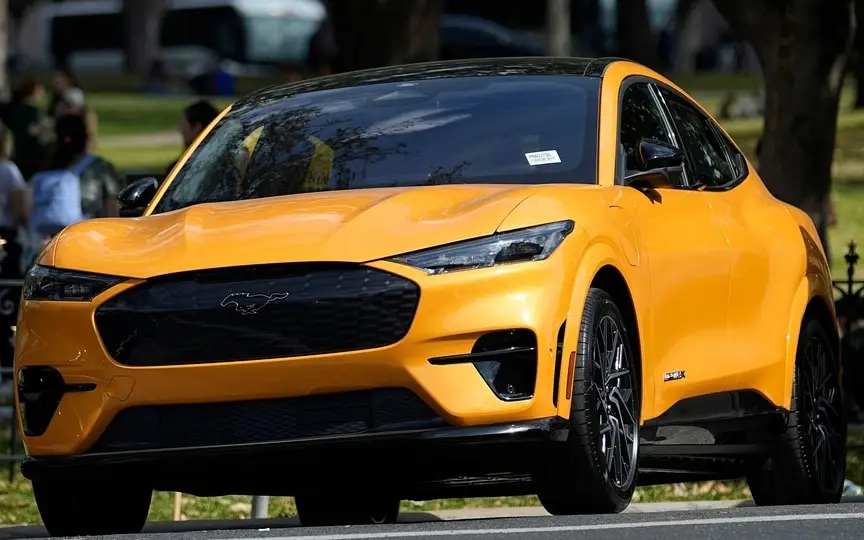Big Three Automakers Forced to Cut Back on Electric Vehicle Production
Bayerische Motoren Werke AG CEO Oliver Zipse expressed disbelief when questioned about the possibility of reducing production in response to a fierce price competition in the electric vehicle market. He humorously pointed out that just two years ago, the situation was quite the opposite.
Automakers not called Tesla Inc. have spent the past decade being cajoled by governments, capital markets and journalists like me to accelerate the transition to electric vehicles—and for good reason, because the planet is overheating. Now that electric vehicle sales aren’t growing as fast as expected, Volkswagen AG, General Motors Co. and Ford Motor Co. are forced to either reduce electric car production or delay new models and factories. (BMW has not yet reduced.)
It’s a painful moment for both incumbents and newcomers; The winners are those who are able to react nimbly to unstable consumption demand without forgetting that the energy change is unstoppable. Thanks to a flexible manufacturing system and previous experience selling electric cars at a dizzying pace, BMW should be more durable than most.
With the exception of enthusiastic early adopters, most consumers have not yet been convinced to go electric due to concerns about cost, charging, high insurance premiums and poor residual values. These problems are solvable, but I don’t blame customers for being skeptical: a car is the second most expensive thing most of us buy, and electric cars often aren’t cheap.
As with mobile phones or televisions, the next generation of battery-powered models will be more affordable and efficient than the first – and also more profitable for manufacturers. (Ford’s EV unit has lost more than $3 billion this year)
The crux of the problem for industry is that only by investing more in factories and technology will it achieve the economies of scale and lower costs needed to attract more buyers. The sums are staggering – VW anticipates investing more than 120 billion euros ($131 billion) in electric cars and software over the next five years. Car manufacturers have tried to limit the risks of misjudging demand by making battery joint ventures.
President Joe Biden’s administration is offering huge subsidies under an anti-inflation law that has been matched by neighboring Canada. According to estimates by Benchmark Mineral Intelligence and Canada’s Parliamentary Budget Officer, automakers and battery makers could receive a combined total of more than $170 billion in North American battery plant operating costs.
In short, auto-equity lovers have gone subsidy-crazy, but there’s a catch: IRA production incentives are set to expire in 2032 — if Republicans and Donald Trump haven’t already scrapped them — hence the flood of giant announcements seen last year. .
Capital markets have dictated an equally rapid change. Tesla is valued a million times higher than others because it is not burdened by dying internal combustion engines and builds electric cars profitably. Meanwhile, investors are shying away from European automakers, worried they will be overwhelmed by cheap and technologically advanced Chinese imports of electric vehicles.
A re-evaluation is now underway. Tesla’s profit margins have fallen this year after price cuts, rising interest rates and insufficient demand for the two electric models that generate most of its revenue. At the same time, China’s electric car sector is plagued by overcapacity.
The U.S. and Europe still need a lot more battery and electric car factories, but manufacturers are revising the timing of some spending — potentially leaving IRA money on the table. (This is far from a universal trend, however, as others such as Hyundai Motor Co. and Toyota Motor Corp. have stepped up investment in electric vehicles.)
The answer is not for governments to relax emissions targets, but to use the current pause to speed up the deployment of charging infrastructure.
I have limited sympathy for western car manufacturers. Instead of developing affordable and attractive EVs, they spent too long selling gas-guzzling SUVs and trucks, arguing that these are what consumers want. To paraphrase Steve Jobs, companies need to show consumers what they want – as Tesla did.
Citroen’s €23,300 e-C3, which will be built in Slovakia and arrive early next year, is exactly the kind of affordable model needed to convince sticklers to get a plug. The drop in the prices of battery metals also encourages the cost competitiveness and demand of electric cars.
Ten years ago, BMW broke new ground in electric car design with the electric i3 hatchback, but most consumers preferred its petrol and diesel models, and the i3 was discontinued last year. But BMW learned a valuable lesson. Its factories have been redesigned so that internal combustion engine, electric and hybrid models can be built on the same line, so that it can flexibly meet waxing and fading needs.
While its goal of 50% electric car sales by 2030 is far less ambitious than some other companies, the Munich-based company has a comprehensive and attractive lineup of battery-powered models. It still needs consumers to buy them — but it looks better than the competition at navigating the bumpy road ahead.
Chris Bryant is a Bloomberg Opinion columnist covering industrial companies in Europe. Previously, he was a reporter for the Financial Times.




